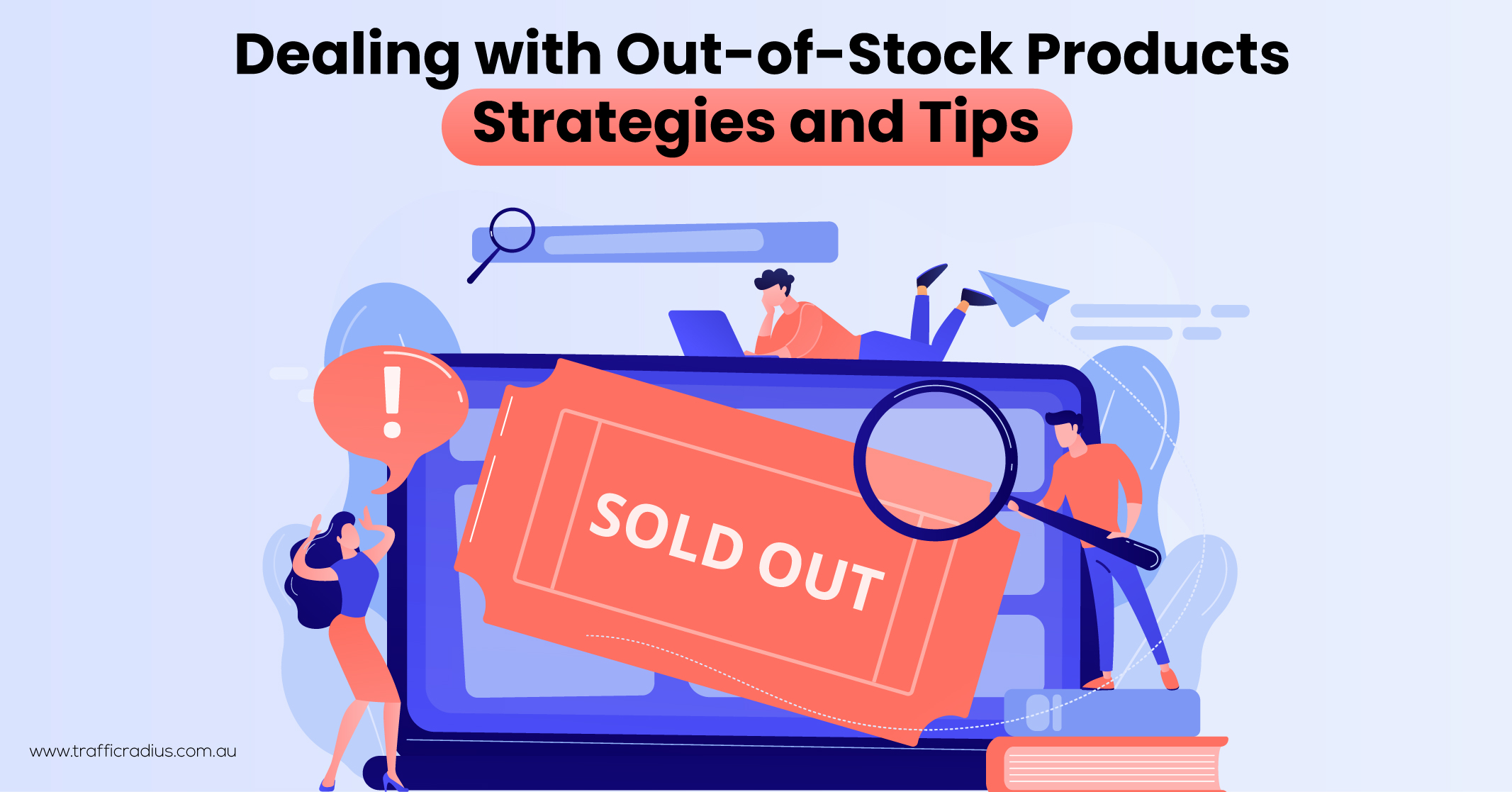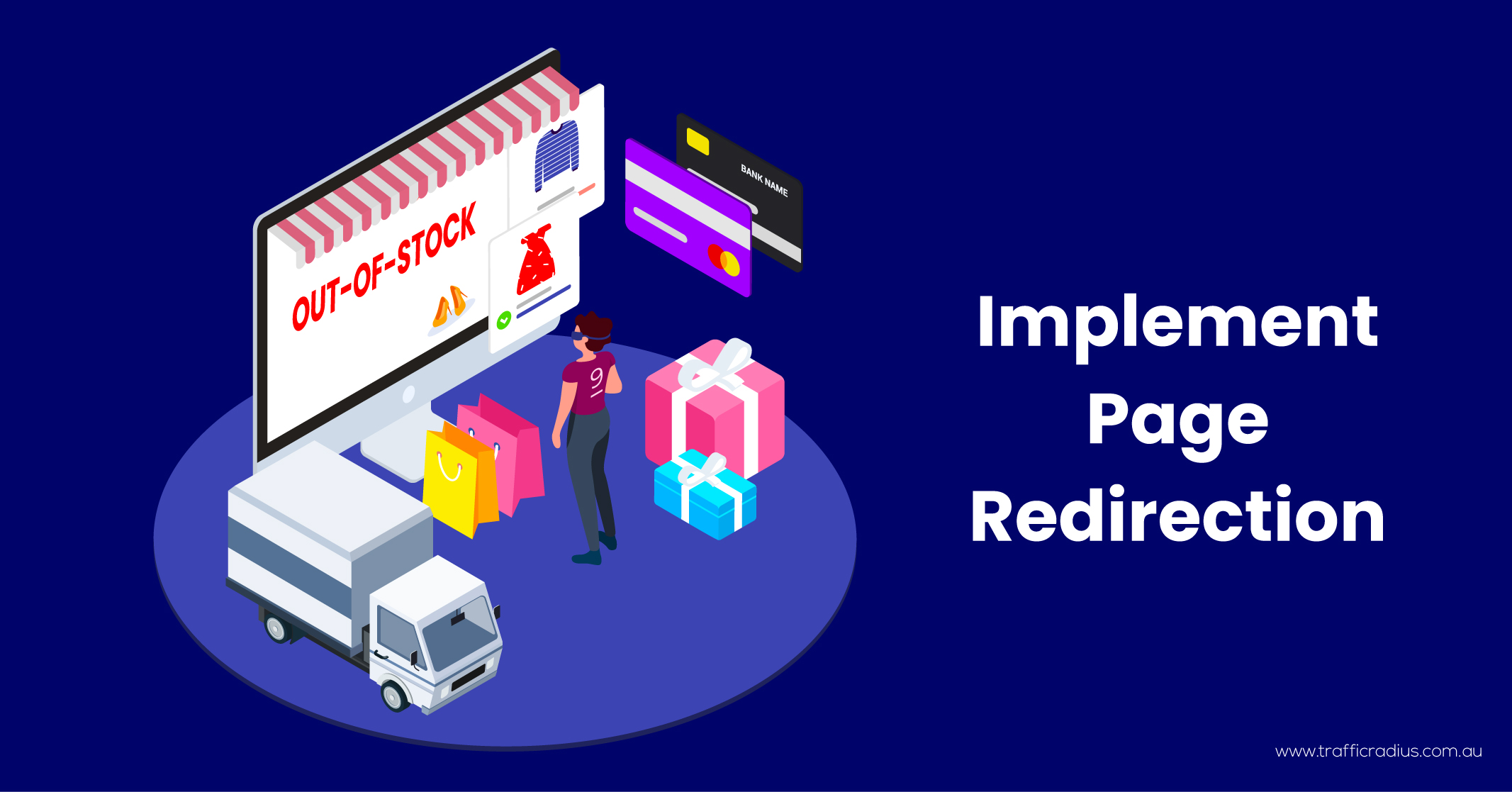I hope you enjoy reading this blog post.
If you want to get more traffic, Contact Us

Click Here - Free 30-Minute Strategy Session
Be quick! FREE spots are almost gone for this Month. Free Quote

When it comes to handling out-of-stock products on e-commerce websites, the famous joke in the SEO community holds: “It depends.” There are numerous factors to consider, and each decision involves a balancing act between SEO and user experience.
Fortunately, many content management systems come equipped with pre-defined rules for managing out-of-stock products. However, it’s important to note that these rules can often be customised to suit your specific needs. In some cases, there may be no predefined logic at all, giving you the freedom to establish your guidelines and collaborate with developers to implement them.

Click Here – Free 30-Minute Strategy Session
Be quick! FREE spots are almost gone for this Month
Now, let’s delve into the various scenarios that may arise when dealing with out-of-stock products, while keeping in mind the importance of Ecommerce SEO, along with helpful tips and strategies to optimise your website:
Learn More: 8 Definitive ECommerce SEO Steps That Will Transform Your Business
When it comes to permanently out-of-stock products, it’s clear that these products are no longer available and won’t be restocked. However, this doesn’t automatically mean that you should remove the associated pages from your website. There are several options to consider in this situation.

If you have a comparable product that you wish to promote as an alternative, it can be beneficial to implement a 301 redirect from the old, permanently out-of-stock product page to the new product page. This approach not only guides users towards a similar item but also helps preserve any existing link value, especially if the pages share similarities.
However, if the old and new pages are not closely related, redirecting to a category page or even the homepage might result in search engines treating these redirects as soft 404 errors, potentially leading to a loss of link value. Nevertheless, if redirecting to these alternative locations aligns with your intended user flow, it’s still worth considering, as there is a possibility that link value could still be passed.
Given that many websites have removed numerous products in the past, it’s worthwhile to explore opportunities to redirect outdated pages to relevant and current ones. By doing so, you can reclaim the value from existing links while optimising SEO for product pages and effectively managing out-of-stock products in the realm of e-commerce.
In cases where you need to remove a page and there is no suitable current product to redirect to, the recommended approach is to delete the page entirely and return a 404 or 410 status code to indicate that the page no longer exists.
Additionally, it’s crucial to ensure that any internal links pointing to these pages are removed. While some of these links may be automatically eliminated, it’s important to manually crawl your site and check for any remaining links that may need to be addressed.
By following this approach, you can effectively manage the removal of pages associated with out-of-stock products, maintain a healthy website structure, and provide accurate signals to search engines.
While it’s true that the instinctive response to a permanently out-of-stock product is to delete or redirect the associated page, there are valid reasons to consider leaving the page live while using ecommerce SEO strategies.
One of the reasons to keep the page active is if it contains valuable resources such as documentation or helpful information that can alleviate the burden on customer support teams. Additionally, if the page continues to receive a significant amount of search traffic, preserving its visibility can be advantageous for redirecting users to other available products you offer.
However, it’s important to acknowledge that removing the links to these pages can potentially impact your rankings. This situation presents a conflict between the potential SEO benefits and user experience. Landing on a page where no products are available, whether through internal search or category pages, can be a subpar user experience.
To address this, implementing a filter option for users to remove out-of-stock products or display these products at the end of any listings can be beneficial. Deprioritising these pages may result in lower rankings, but it is generally recommended to provide a better user experience.
Ultimately, there may come a point where these pages are deemed no longer useful, and at that stage, you may consider redirecting or deleting them. The decision should be based on a careful evaluation of the page’s usefulness and its impact on SEO and user experience.
Learn More: 45 Benefits of SEO- Why Should Businesses Use it?
If you choose to keep the out-of-stock product pages live, there are several useful actions you can take or implement within your system to enhance the experience for both you and your customers.
By incorporating these features and strategies, you can maintain the live pages of out-of-stock products while providing useful options and opportunities for customers. This helps manage their expectations, keeps them engaged and increases the likelihood of conversions when the products are restocked.
In certain situations, there may be products for which the availability is uncertain, making it difficult to determine if or when they will be restocked. In such cases, it is advisable to minimise the visibility of these products on your website to reduce the chances of users encountering them. Let’s explore the available options for handling such scenarios.
As previously highlighted, there are valid reasons to keep a page live in an ecommerce inventory management system, such as redirecting search traffic to other products or utilising the page for support and documentation purposes. In such cases, it is not recommended to delete the internal links associated with these pages.
However, it is important to reassess the situation over time. If you determine that the relevant products will not be restocked or the pages have become obsolete, you may consider redirecting or deleting them at a later stage. Regular evaluation will help ensure that the website maintains relevance and usefulness to both users and search engines.
Using the “noindex” option is generally not favoured and not typically recommended due to its potential impact on the flow of PageRank. It is considered suboptimal as it can potentially hinder the flow of ranking authority.
However, it’s worth mentioning that in certain systems, the “noindex” tag is employed as a trigger to prevent products from being displayed to users. On a positive note, when a product is marked as “noindex,” it tends to reappear in search results relatively quickly after Google recrawls the page.
When considering whether to utilise the “noindex” option, it is important to carefully evaluate the trade-offs between temporarily removing the product from user view and the potential impact on PageRank. The decision should be made based on a comprehensive assessment of the specific circumstances and goals of the website.
Eventually, you may reach a point where you need to make a definitive decision regarding the out-of-stock product. Treating it as if it will not be restocked and choosing to delete or redirect it becomes a reasonable course of action. The timing for this decision can vary, often based on factors such as demand or a predetermined duration.
In the short term, it is advisable to keep the internal links associated with the product page active. However, it is important to note that these links should be cleaned up and addressed properly at a later stage.
Determining the appropriate time to delete or redirect the page requires careful consideration of various factors. This decision-making process ensures that your website remains organised, user-friendly, and optimised for search engines.
What are out of stock?
To effectively manage out-of-stock products, it is important to have a comprehensive list of these items sourced from a data repository that manages your product inventory. Ideally, this information can be obtained from your content management system’s backend or another dedicated data source.
However, if such a list is not readily available, an alternative approach is to conduct a website crawl using a tool like Site Audit. By analysing the HTML code, you can search for specific pages that display the out-of-stock message, allowing you to compile a list of these pages for further action and optimisation.
As demonstrated, there are numerous options available when it comes to handling out-of-stock products while incorporating ecommerce SEO tips and ecommerce SEO best practices. My general recommendation is to establish a set of rules that align with your preferences and adhere to them.
The logic you choose to implement is a subjective decision that ultimately rests with you. It’s important to acknowledge that there is no one-size-fits-all solution or perfect approach when dealing with out-of-stock products. By defining your own guidelines and strategies, you can navigate this challenge in a way that best suits your business and satisfies your specific requirements.

LEAVE A REPLY